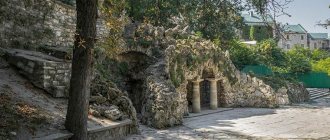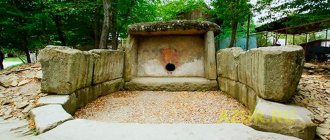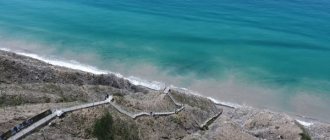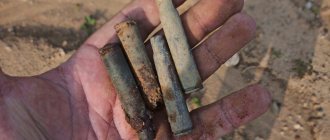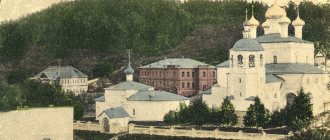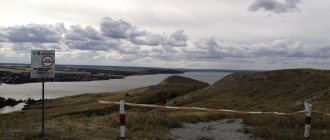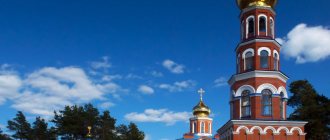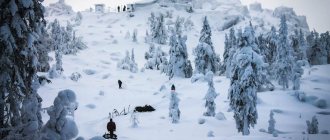Holiday calendar, signs, dates and events for every day of the year - folk calendar, Orthodox calendar, church calendar, eastern calendar, astrological calendar, lunar calendar, industrial calendar, as well as state and professional holidays, including significant World and International holidays and public holidays , folk holidays and omens, and other equally interesting and unusual holidays, dates and events of the year, zodiac signs, dream books and much more.
Calendar for 2022
| January | ||||||
| Mon | W | Wed | Thu | Fri | Sat | Sun |
| February | ||||||
| Mon | W | Wed | Thu | Fri | Sat | Sun |
| March | ||||||
| Mon | W | Wed | Thu | Fri | Sat | Sun |
| April | ||||||
| Mon | W | Wed | Thu | Fri | Sat | Sun |
| May | ||||||
| Mon | W | Wed | Thu | Fri | Sat | Sun |
| 1 | ||||||
| 2 | 3 | 4 | 5 | 6 | 7 | 8 |
| 9 | 10 | 11 | 12 | 13 | 14 | 15 |
| 16 | 17 | 18 | 19 | 20 | 21 | 22 |
| 23 | 24 | 25 | 26 | 27 | 28 | 29 |
| 30 | 31 | |||||
| June | ||||||
| Mon | W | Wed | Thu | Fri | Sat | Sun |
| 1 | 2 | 3 | 4 | 5 | ||
| 6 | 7 | 8 | 9 | 10 | 11 | 12 |
| 13 | 14 | 15 | 16 | 17 | 18 | 19 |
| 20 | 21 | 22 | 23 | 24 | 25 | 26 |
| 27 | 28 | 29 | 30 | |||
| July | ||||||
| Mon | W | Wed | Thu | Fri | Sat | Sun |
| 1 | 2 | 3 | ||||
| 4 | 5 | 6 | 7 | 8 | 9 | 10 |
| 11 | 12 | 13 | 14 | 15 | 16 | 17 |
| 18 | 19 | 20 | 21 | 22 | 23 | 24 |
| 25 | 26 | 27 | 28 | 29 | 30 | 31 |
| August | ||||||
| Mon | W | Wed | Thu | Fri | Sat | Sun |
| 1 | 2 | 3 | 4 | 5 | 6 | 7 |
| 8 | 9 | 10 | 11 | 12 | 13 | 14 |
| 15 | 16 | 17 | 18 | 19 | 20 | 21 |
| 22 | 23 | 24 | 25 | 26 | 27 | 28 |
| 29 | 30 | 31 | ||||
| September | ||||||
| Mon | W | Wed | Thu | Fri | Sat | Sun |
| 1 | 2 | 3 | 4 | |||
| 5 | 6 | 7 | 8 | 9 | 10 | 11 |
| 12 | 13 | 14 | 15 | 16 | 17 | 18 |
| 19 | 20 | 21 | 22 | 23 | 24 | 25 |
| 26 | 27 | 28 | 29 | 30 | ||
| October | ||||||
| Mon | W | Wed | Thu | Fri | Sat | Sun |
| 1 | 2 | |||||
| 3 | 4 | 5 | 6 | 7 | 8 | 9 |
| 10 | 11 | 12 | 13 | 14 | 15 | 16 |
| 17 | 18 | 19 | 20 | 21 | 22 | 23 |
| 24 | 25 | 26 | 27 | 28 | 29 | 30 |
| 31 | ||||||
| November | ||||||
| Mon | W | Wed | Thu | Fri | Sat | Sun |
| 1 | 2 | 3 | 4 | 5 | 6 | |
| 7 | 8 | 9 | 10 | 11 | 12 | 13 |
| 14 | 15 | 16 | 17 | 18 | 19 | 20 |
| 21 | 22 | 23 | 24 | 25 | 26 | 27 |
| 28 | 29 | 30 | ||||
| December | ||||||
| Mon | W | Wed | Thu | Fri | Sat | Sun |
| 1 | 2 | 3 | 4 | |||
| 5 | 6 | 7 | 8 | 9 | 10 | 11 |
| 12 | 13 | 14 | 15 | 16 | 17 | 18 |
| 19 | 20 | 21 | 22 | 23 | 24 | 25 |
| 26 | 27 | 28 | 29 | 30 | ||
Designations in the calendar: X - holidays; X—weekends; X - reduced working day by 1 hour;
Flora and fauna
The nature here is magnificent! The Mashuksky forest park, encircling the foot of the mountain and connecting with the Beshtaugorsky forest park, is a green oak grove, the main types of trees in which are ash and hornbeam. Many of them are impossible to see or hug!
The vegetation on the slopes is varied: sometimes it is a meadow-like steppe, sometimes it is a subalpine meadow. And valuable. After all, more than 80 species are rare crops, and almost a third - 25 plants (for example, Mashuk's hawkweed, angustifolia snowdrop, Pyatigorsk hawkweed, rocky euphorbia) - are standards. They were discovered and described for the first time here.
29 species of Mashuk plants are listed in the Red Books of Russia and Stavropol. But on the northern slope the area is 0.42 square meters. km is allocated to the Perkalsky dendrological nursery, a little more than a third of which is given to the ecological-botanical station of the BIN RAS.
The nursery presents crops growing in the Caucasus and brought from different countries and continents. Think about it: more than 800 varieties of trees and shrubs! There are about 700 herbaceous plants, and almost 100 of them are medicinal! So, if you see magnolias and ginkgo biloba in bloom, don’t be surprised!
But even this wealth cannot be compared with what was here just over a century ago. Bird voices and animal cries filled the space. Now, when the foot of Mount Mashuk has been built up, and civilization does not stop trying to develop these promising territories, birds and reptiles are declining.
There are no badgers or the unique forest cats here anymore. Hares, foxes and even hedgehogs are becoming increasingly rare. Bats are also on the verge of extinction.
Holiday calendar, dates and events for every day of the year
All state and professional holidays of Russia, including significant World and International holidays, and other equally interesting holidays, dates and events of the year... Holiday calendar for every day; Russian production calendar with holidays.
• What holiday is today and tomorrow, dates and events...
Mineral springs
Forty mineral springs once flowed on the slopes of Mashuk. It was the healing power of water that caused the first man-made transformations on the mountain: the Lermontov, Pirogov, Pushkin, Ermolov, People's and Teplosulfur baths, the Academic and Mikhailovsk drinking galleries arose around them. Thus, Mount Mashuk began the history of Pyatigorsk as a sanatorium and resort place.
Today, mineral water comes from wells and adits, which are divided into the following types:
Drinking treatment:
- warm, hot and cold carbonic waters;
- hydrochloric-alkaline carbonic and carbonic-hydrogen sulfide waters.
Therapeutic baths:
- warm carbon dioxide-hydrogen sulfide waters of the second Pyatigorsk type;
- radon waters.
Less used types:
- nitrogen-carbon dioxide, methane waters, which contain increased amounts of iodine and bromine;
- weakly carbonated sodium chloride waters.
Church calendar for every day
The church calendar is a time counting system used by the Orthodox Church to determine the sequence of church holidays and fasts in the annual cycle, as well as the corresponding services. Also the name of printed publications of various types, containing (in addition to general calendar functionality) elements of the monthly calendar and other materials of a liturgical and menological nature adapted to a specific year. The Church calendar contains two annual circles of events... Church calendar
Geography
View of Pyatigorsk
“The air is clean and fresh, like a child’s kiss; the sun is bright, the sky is blue - what would seem to be more?” – this is what Mikhail Lermontov said about Pyatigorsk through the mouth of the “hero of our time” Pechorin. This is what you will probably think as soon as you get off the train and take a look at this cozy green town.
Pyatigorsk is located in the valley of the mountain river Podkumok, at the foot of the Mashuk and Beshtau mountains. If you look at the Pyatigorsk mountains from afar, it will seem that they grew up literally out of the blue, and this is to some extent true. The mountains of Pyatigorsk and the surrounding area are not related to the Greater Caucasus Range, although they are located in the Caucasus. These are laccolith mountains, or in other words, failed volcanoes. Millions of years ago, volcanic activity raged in the territory of the CMS, but the viscous magma was never able to reach the surface and only slightly raised the soil in some places. Where this happened, laccolith mountains grew. There are seventeen such mountains in the CMS, and the five-domed Beshtau is the highest among them. Its central peak reaches 1400 meters. The height of Mashuk is 993 meters, and given that the city itself is located at an altitude of 450-600 meters above sea level, you can easily (or almost easily) climb to the top of Mashuk on foot.
Mount Mashuk
The remaining fifteen laccolith mountains are scattered throughout the territory of the Caucasian Mineral Waters. At the foot of Zheleznaya and Razvalka the city of Zheleznovodsk grew up, to the south of Pyatigorsk there are twin sisters Yutsa and Jutsa, towards the city of Mineralnye Vody (not to be confused with the KMS region!) you can see mountains with “zoological” names: Camel, Bull and Snake. But Mount Dagger, which stood there, was unlucky - it was razed to the ground, as it prevented planes from taking off and landing.
Mount Beshtau
It is believed that mineral springs also owe their origin to the volcanic activity of laccolith mountains. How does this happen? Melted snow and storm water penetrates the sedimentary rocks of the mountains and flows slowly, at a speed of about 40 meters per year, from south to north. Along the way, it absorbs volcanic gases, is saturated with healing mineral salts and comes to the surface already mineralized, and in some places slightly carbonated!
Due to the fact that Pyatigorsk is located on a foothill plain, it is open to almost all winds. At the same time, the Beshtau and Mashuk mountains are not large enough to shelter the city from bad weather. Basically, eastern and western winds dominate in Pyatigorsk. They play a major role in shaping the climate of the resort city. In winter, eastern winds bring cold air from the steppe regions, forming low clouds, fog and frost. And in the summer, these same winds bring hot and dry weather to Pyatigorsk. In summer the temperature can reach 30-35 degrees Celsius, and in winter it most often stays around zero.
Pyatigorsk in winter
Author profile:
Russian folk calendar for every day
Season: Winter - December, January, February.
Season: Spring - March, April, May.
Time of year: Summer - June, July, August.
Season: Autumn - September, October, November.
Ways to the top
Hiking on Mashuk is a pleasure, considering everything you read about in this article today. There are a great many paths, trails, and serpentines here.
The most popular mountain trail starts from the Resort Exhibition on Gagarin Boulevard. The road is three kilometers long, winding, and if you walk along it, you can reach the top in 45 minutes.
The southern slope of the mountain is difficult to climb, so tourists make their way mainly along the northern one, through the famous Perkala Arboretum.
There is also a ten-kilometer ring road. True, you can drive on it very carefully, because it is also intended for therapeutic walking. Dosed physical activity is determined by the attending physician of the sanatorium.
But the easiest and fastest way to climb Mashuk was carried out in 1971. This is a 964-meter-long cable car of the same name. Two glazed carriages with a total capacity of 40 people operate simultaneously. Thanks to it, you can be at the top within three minutes after landing.
Boarding takes place at the station near the radon baths; you can get here by bus or taxi. The cable car operates every day from 10:00 to 18:00. There is a charge for travel.
One way or another, having climbed the gentle peak of Mashuk, you can not only relax here, but also have a snack at the Eagle cafe. After going down the slope a little, you will find yourself in a wonderful clearing with gnomes, where the Gnomodom cafeteria is located.
You can also organize a wedding banquet in these cafes. Such a celebration will undoubtedly be remembered for a long time.
